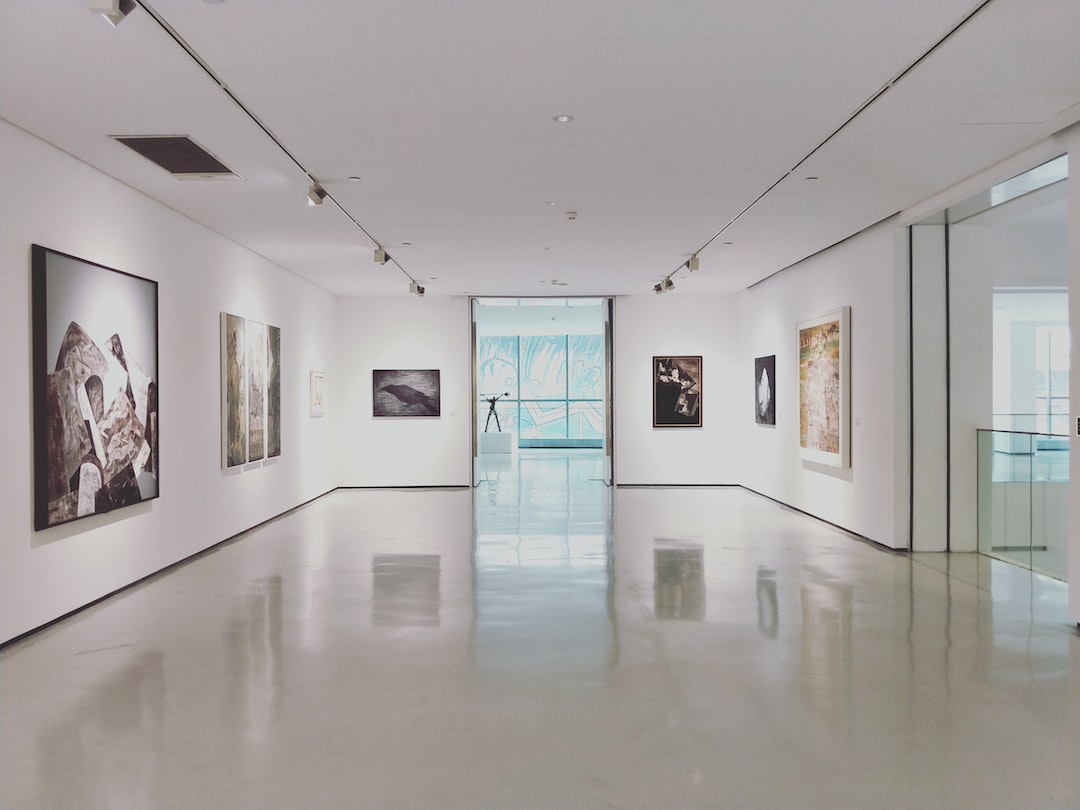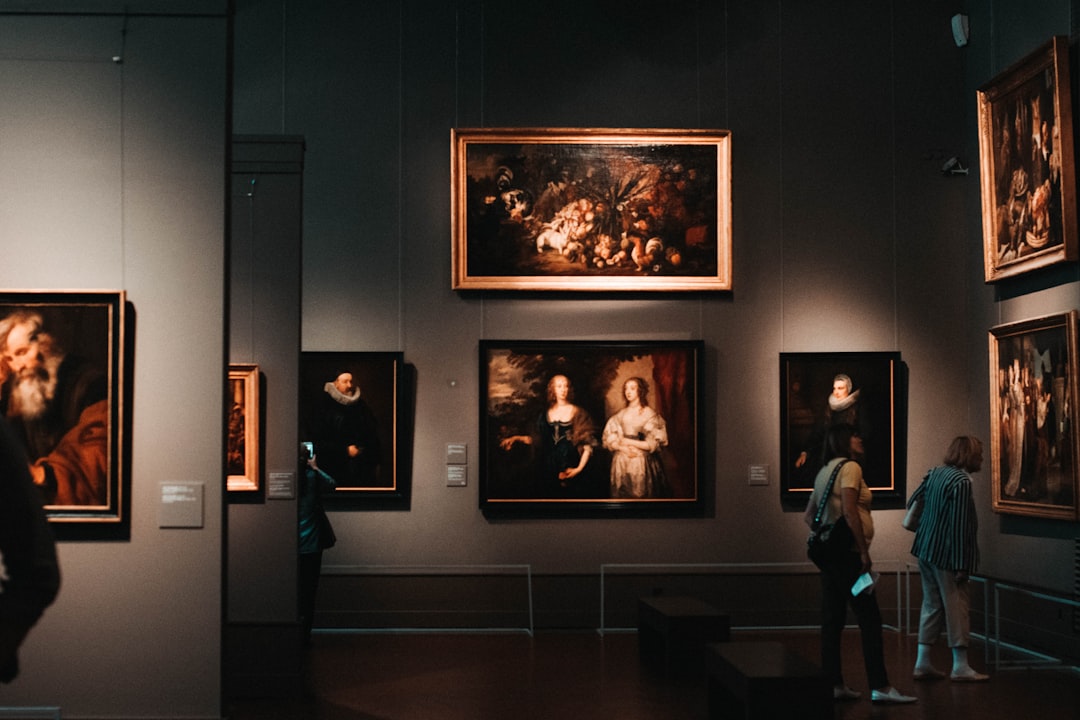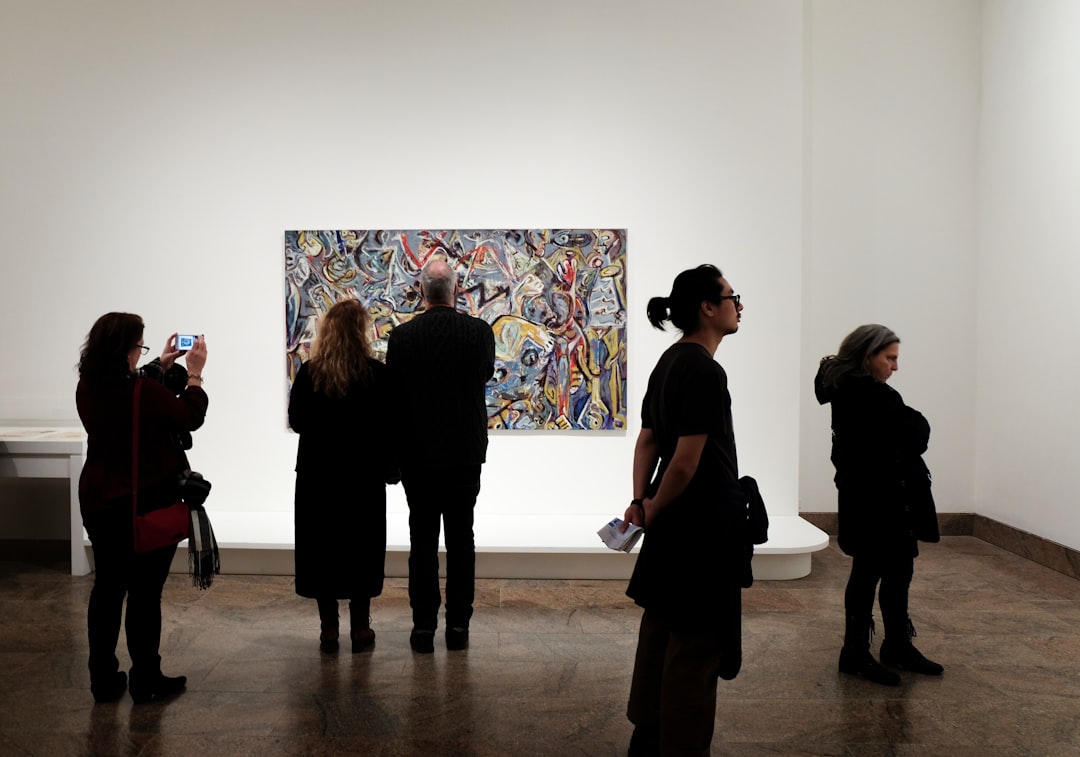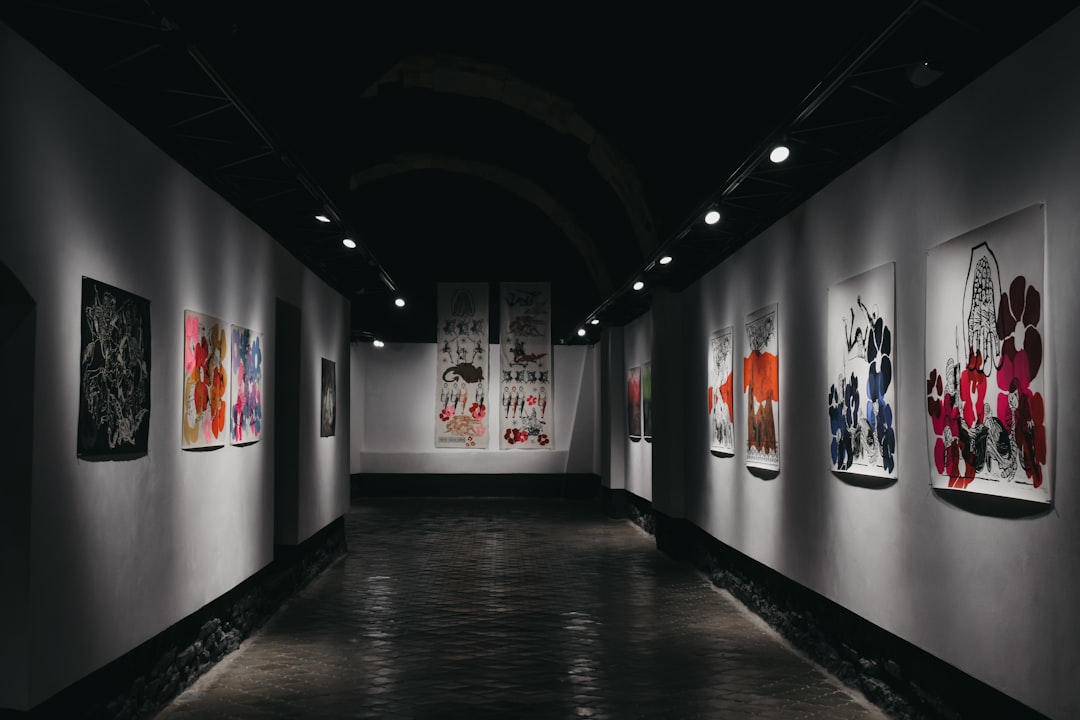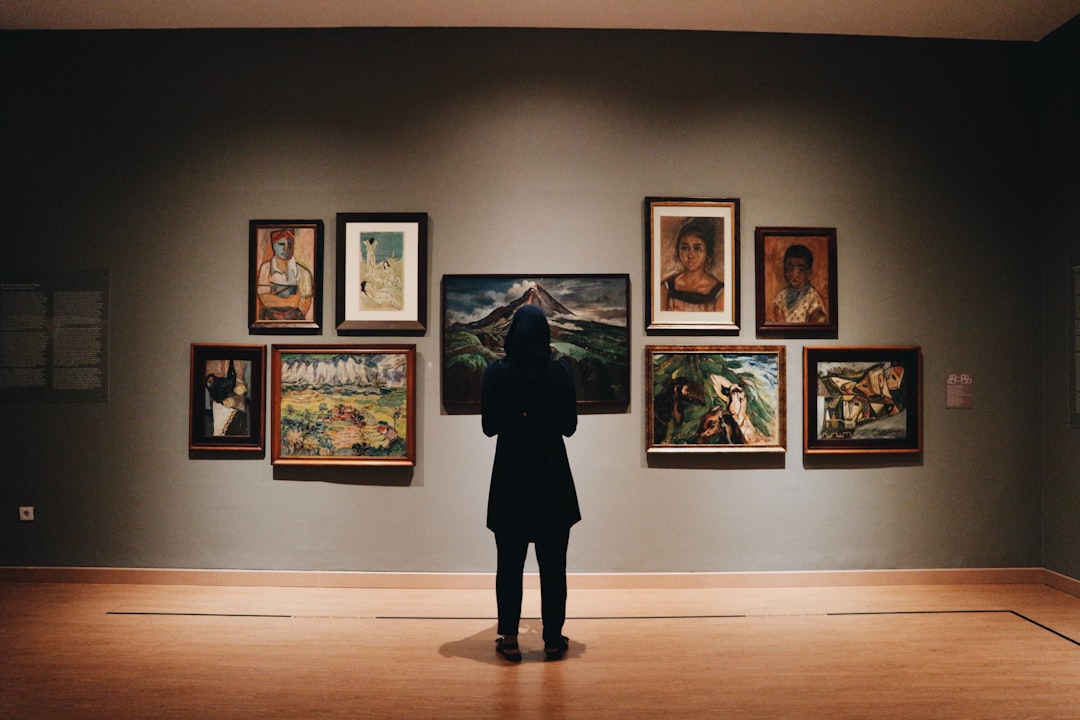The art world has always been shrouded in mystery, exclusivity, and elitism. The traditional system has been dominated by a few powerful gatekeepers who decide which artists get recognition, which artworks get displayed in museums, and which collectors get to own them. The opaque and subjective nature of the art market has led to a lack of transparency, accountability, and trust. But what if there was a way to disrupt this system and empower artists, collectors, and enthusiasts? Enter blockchain technology.
Blockchain is a decentralized and immutable ledger that allows for secure and transparent transactions without the need for intermediaries. It has the potential to transform various industries, including finance, healthcare, supply chain, and gaming. But what about art? How can blockchain impact the art world? The answer lies in its ability to solve some of the most pressing issues facing the industry, such as authenticity, provenance, fraud, and access. Let’s explore each of these areas and see how blockchain is changing the game.
Disrupting the Art Industry: How blockchain is changing the traditional system
Blockchain technology is often associated with cryptocurrencies like Bitcoin, but it has the potential to revolutionize a wide range of industries beyond finance. One of the industries that’s ripe for disruption is the art world, which has traditionally relied on intermediaries like galleries, auction houses, and dealers to facilitate transactions and authenticate works of art. With blockchain, however, many of the traditional barriers to entry are being dismantled, giving artists and collectors more power and control over the entire process.
One of the biggest ways that blockchain is disrupting the art industry is by creating a more decentralized and transparent system. In the past, it was often difficult to trace the provenance of a work of art or verify its authenticity, which made it easier for fraudulent actors to create and sell counterfeit works. But with blockchain, every transaction is recorded on an immutable ledger that can’t be altered or tampered with, making it much easier to track the history of a piece of art and ensure its legitimacy.
Moreover, blockchain is also making it easier for artists and collectors to bypass traditional gatekeepers and middlemen. Through fractional ownership and tokenization, art lovers can now invest in and own a piece of a work of art or even an entire collection, without having to spend millions of dollars on a single piece. This opens up the art market to a wider audience and gives artists more opportunities to reach new patrons and collectors.
Another area where blockchain is having a significant impact is in the realm of digital art and non-fungible tokens (NFTs). With blockchain, artists can create digital works that are unique and verifiable, thanks to the blockchain’s ability to create one-of-a-kind digital assets. This is leading to a new market for digital art and NFTs, which are essentially digital certificates of authenticity and ownership. This has the potential to upend the traditional art world, which has long favored physical works over digital ones.
Overall, the impact of blockchain on the art industry is still being explored and developed, but there’s no denying that it’s changing the traditional system in significant ways. Whether it’s by creating a more transparent and decentralized system, making art more accessible through fractional ownership, or creating a new market for digital art, blockchain is opening up new possibilities for artists and collectors alike.
In the past, it was often difficult to trace the provenance of a work of art or verify its authenticity, which made it easier for fraudulent actors to create and sell counterfeit works.
Authenticity and Provenance: How Blockchain is Revolutionizing the Way We Track Ownership and History of Art
When it comes to buying art, one of the biggest concerns for collectors is ensuring that the piece they’re purchasing is authentic. With the rise of counterfeit artwork on the market, it’s become more important than ever to be able to verify the provenance and ownership history of a piece. But how can you be sure that the information provided is accurate? That’s where blockchain technology comes in.
By using blockchain, a decentralized database that’s immutable and transparent, art collectors and dealers can now have confidence in the authenticity and provenance of a piece. Every transaction and ownership transfer is recorded on the blockchain, creating an unalterable record that can be accessed by anyone. This means that the ownership history and authenticity of a piece can be traced back to its creation, giving collectors peace of mind that they’re investing in a genuine piece of artwork.
In the past, the provenance of a piece of art was often lost due to poor record keeping or intentional fraud. However, blockchain technology is changing this by providing a secure and transparent way to track the ownership history of artwork. This can be especially useful in cases where a piece of artwork has been stolen or lost, as it can be traced back to its rightful owner.
Another benefit of using blockchain technology to track the ownership history of artwork is the potential to increase the value of a piece. When a piece has a solid and verified provenance, it can increase the value of the artwork, making it more desirable to collectors and investors. In addition, by providing a secure and transparent way to track ownership, artwork can be more easily transferred and sold, making it easier for collectors to invest in their favorite pieces.
Overall, the use of blockchain technology in the art world is revolutionizing the way we track ownership and history of artwork. By providing a transparent and secure way to verify the authenticity and provenance of a piece, collectors and dealers can have confidence in the pieces they’re investing in. As blockchain technology continues to evolve, it will be exciting to see how it further disrupts and improves the art industry.
By using blockchain, a decentralized database that’s immutable and transparent, art collectors and dealers can now have confidence in the authenticity and provenance of a piece.
Eliminating Fraud: How blockchain is reducing the risk of counterfeit artwork
One of the biggest issues in the art world is the prevalence of counterfeit artwork. Forgeries sometimes make their way into galleries and auctions, deceiving even the most experienced collectors and experts. This not only harms the reputation of the artist, but also the credibility of the art industry as a whole. Fortunately, blockchain technology has the potential to put an end to this problem.
By creating a transparent and tamper-proof ledger of ownership and provenance, blockchain can ensure that every artwork is verified as authentic. This means that any attempts to create fake artwork or manipulate ownership records will be immediately detected and eliminated. Additionally, the ability to track the history of an artwork from its creation to its current state ensures that it retains its value over time and cannot be misrepresented.
The use of blockchain technology to create a secure and immutable record of authenticity directly addresses one of the most significant problems in the art industry. This technology is already being used by several art institutions and galleries, and it’s only a matter of time before it becomes the standard in the industry.
With the elimination of fraud, collectors and investors can be confident that they are acquiring genuine pieces of art. This, in turn, can lead to an increase in the value of artwork and further investment in the arts. Small artists and galleries who were previously at risk of being ripped off by counterfeiters now have a secure platform to showcase their work, which can lead to increased exposure and collaborations.
Overall, blockchain technology offers an exciting opportunity to revolutionize the art industry by providing a secure and transparent method of tracking and verifying artwork. As more and more art institutions and galleries start to recognize the potential of blockchain, the art world will become more accessible, secure, and trustworthy.
Fortunately, blockchain technology has the potential to put an end to this problem.
Tokenization: How Blockchain is Making Art Accessible for Everyone Through Fractional Ownership
If you have ever drooled over a piece of art but found yourself stuck on the price tag, you are not alone. The art world has always been a playground for the super-rich, with prices reaching into the millions of dollars. However, the emergence of blockchain technology is changing this dynamic by allowing art to be tokenized and sold through fractional ownership.
Tokenization is a process where an asset, in this case, art, is divided into smaller units, or tokens, which can be owned by multiple investors. These tokens can then be traded on blockchain-based platforms, allowing anyone to invest in art with just a fraction of the original price, making art investing accessible to a wider audience.
What’s more, fractional ownership also means that ownership of the artwork can be spread across a large group of people, making it easier to manage and sell the artwork as a community. This reduces the burden of having to find a single buyer for an entire piece, which can often be a daunting task for collectors.
One of the most significant benefits of tokenization is that it enables artists to reach a wider audience and gain more exposure for their work. With fractional ownership, artists can sell their artwork to a large group of investors, allowing them to receive more support and recognition for their creations. In turn, this could lead to more investment in the arts, helping to support struggling artists and art organizations.
Additionally, tokenization also creates a transparent and secure system for art ownership. Since blockchain is a decentralized ledger, it allows for complete transparency and removes the need for intermediaries, reducing the risk of fraud and making ownership transfer more efficient.
Overall, tokenization is revolutionizing the way people invest in art, disrupting the traditional art world and making art accessible to the masses. As blockchain technology continues to develop, we are excited to see how it will continue to shape the future of the art world.
One of the most significant benefits of tokenization is that it enables artists to reach a wider audience and gain more exposure for their work.
NFTs and Digital Art: How Blockchain is Creating a New Market for Digital Art and Non-Fungible Tokens
Digital art has been a part of the art world for decades, but it was often considered less valuable than traditional art forms. That all changed with the advent of blockchain technology and non-fungible tokens (NFTs).
NFTs are unique digital assets that are verified and stored on a blockchain. They allow digital art to be owned, traded, and sold just like physical art. This means that digital art can now be valued and appreciated in the same way as traditional art.
One of the most fascinating aspects of NFTs is the ability to prove ownership and authenticity. Because NFTs are verified and stored on a blockchain, they can’t be duplicated or counterfeited. This gives digital artists a new level of security and legitimacy in the art world.
But NFTs aren’t just for digital art. They can also be used for other unique digital assets, such as virtual real estate, video game items, and even tweets. The potential for NFTs is endless, and it’s exciting to see where this technology will take us in the future.
The rise of NFTs has also created a new market for digital art. Artists can now sell their work directly to collectors without the need for a middleman. This allows them to retain more control over their art and earn more money for their work.
Finally, NFTs have made art more accessible to a wider audience. Fractional ownership of art has already been made possible by blockchain technology, but NFTs take it to a new level. Collectors can now invest in digital art without having to purchase the entire piece, making art ownership more accessible and affordable for everyone.
NFTs and blockchain technology have opened up a whole new world for digital art and unique digital assets. It’s exciting to see where this technology will take us and how it will continue to disrupt and revolutionize the art world.
It’s exciting to see where this technology will take us and how it will continue to disrupt and revolutionize the art world.
Conclusion: The Future of Blockchain in the Art World
As we come to the end of our discussion on blockchain’s impact on the art world, it’s clear that the technology has immense potential to revolutionize the traditional system of art. From authenticating artwork to making it more accessible through fractional ownership, blockchain is changing the way we approach art ownership and transactions.
But what does the future hold for blockchain in the art world? The truth is, no one really knows. The technology is still in its early stages, and there are many questions about its long-term viability and sustainability. However, one thing is clear: blockchain has the potential to disrupt the art industry in ways that we can’t even imagine yet.
One area where blockchain is likely to continue making waves is in the realm of digital art and NFTs. As we’ve discussed, blockchain technology has made it possible to authenticate and track ownership of digital art in a way that was previously impossible. This has opened up a whole new market for digital art, with NFTs selling for millions of dollars at auction.
But beyond digital art, blockchain technology also has the potential to democratize the art world in a way that has never been seen before. By allowing for fractional ownership of artwork, blockchain technology can make art more accessible to a wider audience, creating a more inclusive and diverse art ecosystem.
Of course, there are still many challenges that need to be addressed before blockchain can achieve its full potential in the art world. For example, there are questions about how to ensure that the technology is secure and that artworks are properly authenticated. Additionally, there are concerns about the environmental impact of blockchain, which requires a significant amount of energy to operate.
Despite these challenges, there is no denying that blockchain technology has the potential to transform the art world in ways that we can’t even imagine yet. As artists, collectors, and enthusiasts, we should be open-minded and curious about the possibilities that blockchain presents for the future of art. Who knows, the next great masterpiece could be authenticated and sold using blockchain technology.
